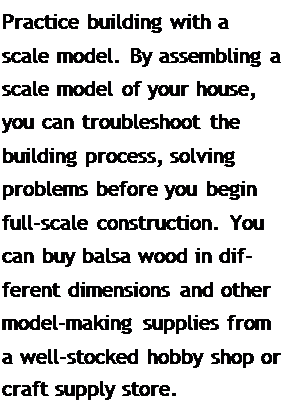Design for the future
Consider building a wheelchair ramp leading to an entry or at least providing гост fora ramp to be built in the future. An accessible ramp has a 1 – in-12 rise (1 ft. of rise for every 12 ft. of length). When designing a house, its smart it) look beyond what your needs are today. Try to think about and allow for expansion in the future. An addition to the family—whether a new child or an elderly parent—often requires adding a bedroom. If you plan ahead, you 11 have room to expand when vou need to. This can save a lot of work and monev down the line.
Whether we admit it or not, we all respond emotionally to our surroundings. Buildings create interior environments that can be drab, distinctive, inspiring, or discouraging. How a building looks, how its laid out, the materials used—all these influence how we feel. Ive visited huge, expensive homes that were not very inviting. Just because a house is big does not mean that it is warm and attractive.
![Design for the future Подпись: DETAILS MAKE A DIFFERENCE. Built-in drawers, painted wood paneling, and a well-crafted valance above the window make this small space extra Special. [Photo • Richard Stringer.]](/img/1312/image023_1.gif)
![]()

Even a small, plain house can be made to feel inviting and uplifting, giving us pleasure, raising our spirits, and making us feel safe and secure (see the photo on the facing page). In the years that IVc been a Habitat volunteer,
Eve had the opportunity to give a few humble houses a bit more personality and life than they’d otherwise have had. In this book, J’ve
4
tried to include many of the lessons I’ve learned—things such as ensuring that there are two sources of light in every room. Simple things like this can help make rooms bright
and cheerv.
/
Ask the right questions
Getting the details right will make life more
convenient when vou move into vour house.
/ /
Details also present many opportunities to make spaces special by using color schemes, hardware, unique materials, and built-in features (see the photo at right). As you’re working out your house’s design, ask yourself these key questions: “Is there a place to set groceries when I enter? Where will we hang up our coats or take off our boots when we come inside in the winter? Is il easy to get food to the table and to clear the dishes?” More than anything else you do, thinking about how you will actually live in the house will help you refine its design and ensure that the experience of living in it is a pleasant one.






Leave a reply